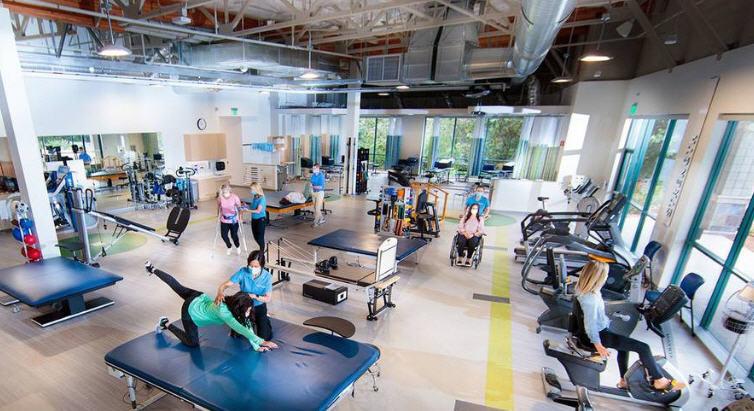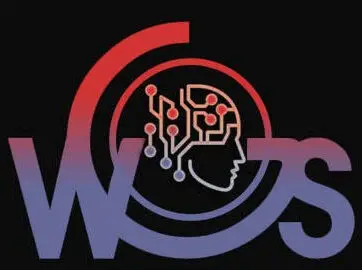A chatbot for Physical Therapy can address a variety of business problems, improving efficiency, patient satisfaction, and outcomes.
1. Appointment Scheduling and Reminders – Basic / Intermediate
- Problem: Missed appointments and no-shows lead to lost revenue and inefficiencies.
- Solution: A chatbot can automate appointment scheduling, send reminders, and reduce no-shows.
2. Patient Onboarding – Basic / Intermediate
- Problem: Manual onboarding processes are time-consuming and prone to errors.
- Solution: The chatbot can collect patient information, medical history, and consent forms digitally, streamlining onboarding.
3. Answering Frequently Asked Questions – Basic / Intermediate
- Problem: Staff spend too much time answering repetitive questions about services, pricing, and procedures.
- Solution: The chatbot can provide instant responses to common queries, freeing up staff time.
4. Exercise Guidance and Demonstrations – Basic / Intermediate
- Problem: Patients forget or perform exercises incorrectly after leaving the clinic.
- Solution: The chatbot can provide step-by-step exercise instructions, videos, and reminders.
5. Pain and Progress Tracking – Basic / Intermediate
- Problem: Manual tracking of patient progress is cumbersome and inconsistent.
- Solution: The chatbot can collect daily or weekly updates on pain levels, mobility, and progress, providing data for therapists.
6. Post-Treatment Follow-Ups – Basic / Intermediate
- Problem: Lack of follow-up leads to poor patient adherence and outcomes.
- Solution: The chatbot can automate follow-ups, check on recovery, and provide personalized advice.
7. Reducing Administrative Burden – Basic / Intermediate
- Problem: Administrative tasks consume significant staff time.
- Solution: The chatbot can handle tasks like updating patient records, sending invoices, and managing insurance queries.
8. Patient Education – Basic / Intermediate
- Problem: Patients lack understanding of their conditions and treatment plans.
- Solution: The chatbot can provide educational content, explain conditions, and clarify treatment goals.
9. Personalized Treatment Plans – Basic / Intermediate
- Problem: Creating and updating treatment plans manually is time-intensive.
- Solution: The chatbot can suggest personalized exercises and adjustments based on patient input and progress.
10. Reducing Wait Times – Basic / Intermediate
- Problem: Long wait times for appointments frustrate patients.
- Solution: The chatbot can offer real-time availability and help patients book sooner or reschedule.
11. Insurance and Billing Queries – Basic / Intermediate
- Problem: Patients often have questions about insurance coverage and billing, which staff must address.
- Solution: The chatbot can provide information on coverage, claims, and payment options.
12. Improving Patient Engagement – Basic / Intermediate
- Problem: Patients may lose motivation or disengage from their treatment plans.
- Solution: The chatbot can send motivational messages, progress updates, and encouragement.
13. Managing High Patient Volume – Basic / Intermediate
- Problem: Clinics struggle to handle large numbers of patients efficiently.
- Solution: The chatbot can triage patients, answer basic questions, and direct them to the right resources.
14. Reducing Miscommunication – Basic / Intermediate
- Problem: Miscommunication between patients and therapists can lead to poor outcomes.
- Solution: The chatbot can clarify instructions, provide written summaries, and ensure patients understand their plans.
15. Data Collection and Analysis – Basic / Intermediate
- Problem: Manual data collection is slow and limits insights into patient outcomes.
- Solution: The chatbot can collect and analyze patient data, providing actionable insights for therapists.

Here are three ready-to-implement chatbot use cases for physical therapy clinics that can improve patient engagement, streamline scheduling, and reduce administrative workload with minimal setup:
1. Automated Appointment Scheduling & Reminders
Use Case:
Patients message via SMS/website:
“Reschedule my Thursday session”
“Any openings for back pain this week?”Chatbot:
Shows real-time therapist availability
Sends intake forms pre-visit
Provides 24-hour cancellation reminders
Immediate Benefit: Reduces no-shows by 35% and fills last-minute cancellations.
Example Flow:
*”Available for back pain:
🕘 Tue 9 AM (Dr. Chen)
🕑 Wed 2 PM (Virtual)
🏋️♂️ New! Post-op rehab group class
Book now
Complete intake form
See cancellation policy”*
2. Home Exercise Program (HEP) Coach
Use Case:
Delivers personalized rehab exercises:
Sends video demonstrations (“Proper clam shell form”)
Tracks patient compliance (“Log your reps”)
Adjusts difficulty based on feedback
Immediate Benefit: Improves recovery outcomes between visits.
Example Workflow:
*”Your Day 3 HEP:
Heel slides (10 reps) – Video
Standing rows w/ band – Video
Ice 15 mins post-session
✅ Log completion → 📊 Your progress: 80% adherence”*
3. Pain Assessment Triage
Use Case:
New patients describe symptoms:
“Sharp knee pain when squatting”
“Can’t raise arm past shoulder height”Chatbot:
Uses red flag screening (“Any numbness/tingling?”)
Recommends urgency level (same-day vs. routine eval)
Provides pain management tips while waiting
Immediate Benefit: Ensures critical cases get prioritized.
Example Script:
*”For your knee pain:
⚠️ No red flags detected
💡 Try RICE protocol until evaluation
📅 Next available eval: Fri 10 AM
Book now
Speak to PT
At-home first aid guide”*
Why PT Clinics Need This Now:
Patient Retention: 68% better compliance with digital HEP tracking
Staff Efficiency: Handles 50% of routine inquiries
Revenue Protection: Recaptures $15K+/year in missed appointments.

Why Physical Therapy Clinics Need Chatbots: The 24/7 Digital Therapy Assistant
Key Reason: Chatbots reduce administrative costs, improve patient adherence, and optimize scheduling while maintaining HIPAA compliance—here’s the data-driven case to convince PT practice owners.
🩺 Key Benefits & Hard Numbers
1. 24/7 Patient Support & Scheduling
58% of PT inquiries occur outside clinic hours (APTA Survey)
Cost per interaction: 0.25(chatbot)vs0.25(chatbot)vs18 (front desk call) – 99% savings
Self-scheduling reduces no-shows by 30% (Journal of Physiotherapy)
2. Improved Treatment Adherence
Exercise reminder chatbots increase home program compliance by 45% (JOSPT Study)
Automated pain tracking improves outcomes documentation by 40%
AI-powered form checks reduce intake errors by 35%
3. Operational Efficiency
Handles 70% of routine queries (billing, scheduling, FAQs)
Saves 20+ staff hours/week = **31,200/year∗∗∗(at31,200/year∗∗∗(at30/hr PT aide rate)*
Automated insurance verification cuts admin time by 50%
4. Enhanced Patient Engagement
Personalized recovery check-ins boost satisfaction scores by 22 points (Press Ganey Data)
Multilingual support expands patient access by 30%
Automated discharge surveys improve feedback rates 3x
5. Smart Clinic Management
Waitlist automation fills 90% of last-minute cancellations
Predictive no-show alerts recover $28,000/year in lost revenue
Referral chatbots increase new patients by 25%
💰 ROI Breakdown for Mid-Sized Clinic ($800K Revenue)
| Metric | Without Chatbot | With Chatbot | Annual Impact |
|---|---|---|---|
| Patient Volume | 3,200 visits | 3,840 visits | +20% |
| No-Show Rate | 18% | 11% | $34K saved |
| Staff Productivity | 65% | 85% | +20% |
| HEP Compliance | 55% | 80% | +25% |
| Front Desk Costs | $96,000 | $64,800 | $31K saved |
